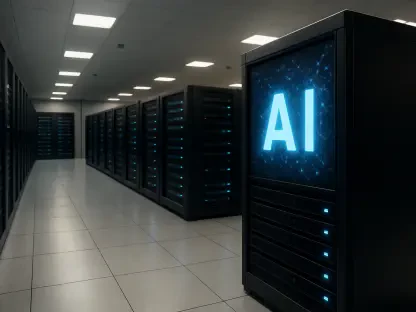The increasing prevalence of AI-powered ransomware poses a significant challenge to various organizations and sectors. State and local governments have become prime targets due to aging IT infrastructure and a surge in sophisticated cyberattacks. Adopting zero-trust networking emerges as a strategic imperative to combat these evolving threats. This market analysis explores the scope of AI-driven ransomware, examines current trends, and projects future implications for strategic cybersecurity measures.
The Exponential Growth of AI-Powered Ransomware
Ransomware has been a persistent issue for organizations globally, but the integration of artificial intelligence has significantly amplified its impact. Ghost ransomware, among other AI-driven variants, leverages machine learning for more effective and widespread attacks. Known vulnerabilities, some persisting for over a decade, are frequently exploited, necessitating a robust response.
The rise in AI-powered ransomware incidents has been marked by the ability of these threats to craft convincing phishing messages at scale. Recent reports, such as those from Zscaler ThreatLabz, indicate an 18% year-over-year increase in ransomware attacks, highlighting the urgency for a modernized approach to cybersecurity.
Zero-Trust Networking: An Emerging Solution
Modernization Imperative
Many state and local government agencies operate with outdated IT systems, making them highly susceptible to ransomware attacks. Traditional cybersecurity measures, relying on implicit trust, have proven inadequate against modern threats. Zero-trust networking offers a transformative solution, continuously verifying every user, device, and application within the network to eliminate vulnerabilities effectively.
AI-Driven Threat Detection
As AI continues to revolutionize cyber threats, zero-trust networking stands out by providing enhanced anomaly detection and access control. The seamless integration of zero-trust principles with advanced AI analytics enables organizations to preemptively address sophisticated phishing and extortion attempts. This proactive approach helps mitigate risks associated with legacy systems and emerging AI-driven ransomware.
Sector-Specific Challenges
AI-powered ransomware does not uniformly impact all sectors. Public sector agencies face unique challenges, primarily due to limited resources and extensive reliance on legacy systems. In contrast, healthcare and educational institutions encounter different attack vectors tailored to their operational scope. A deep understanding of these sector-specific threats and tailored zero-trust frameworks can significantly bolster defenses.
Future Trends and Innovations
The future landscape of cybersecurity is poised for significant changes, driven by regulatory shifts and technological advancements. Increasing reliance on AI for threat detection and mitigation is expected to redefine cybersecurity frameworks. Expert predictions suggest that the integration of AI with zero-trust networking will become a cornerstone of defense strategies.
Emerging innovations indicate a move toward more sophisticated and layered security measures, potentially including decentralized identity management and blockchain-based authentication. These advancements will likely shape the next generation of cybersecurity protocols.
Strategic Recommendations
Organizations must adopt a proactive stance to combat the growing menace of AI-powered ransomware. Key strategies include:
- Continuous IT Modernization: Upgrading legacy systems to reduce vulnerabilities.
- Regular Vulnerability Assessments: Routinely identifying and addressing security weaknesses.
- Comprehensive Employee Training: Educating staff on cybersecurity best practices and threat recognition.
Implementing zero-trust networking should be a focal point, ensuring robust access control and anomaly detection.
Future Considerations
The threat landscape is evolving, and so must our defenses. AI-powered ransomware will continue to advance, making it imperative for organizations to prioritize modernization efforts. Zero-trust networking, with its emphasis on continuous verification and stringent access control, provides a resilient framework for securing sensitive data and mitigating sophisticated cyber threats.
The adoption of advanced cybersecurity measures and the commitment to staying ahead of evolving threats will be critical in safeguarding operations and fortifying defenses against the relentless onslaught of AI-driven ransomware. The era of implicit trust is over; proactive strategies and forward-thinking security models are now paramount.









